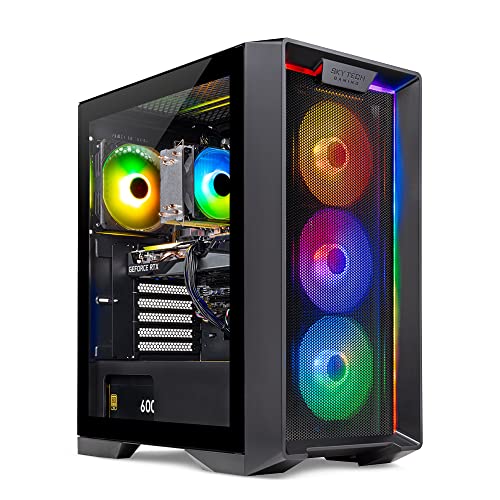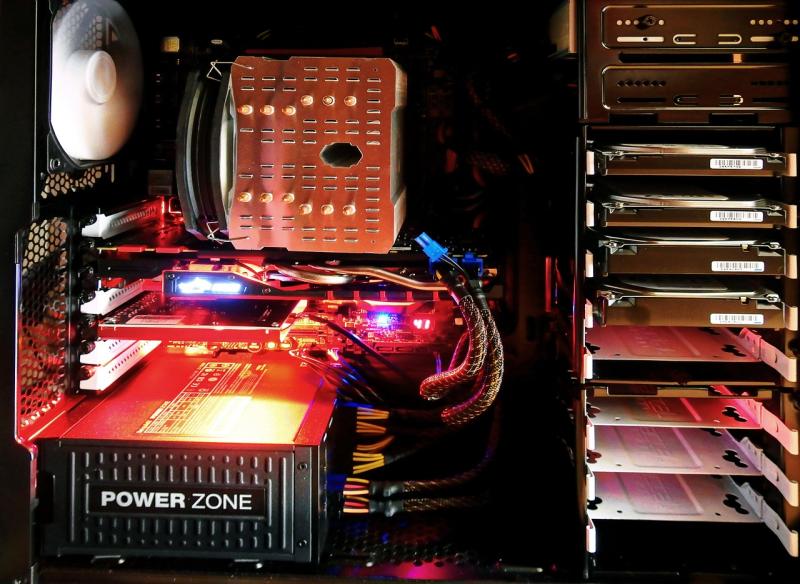BIOS voltage regulation is essential for maintaining stable overclocks in high‑performance PCs. The voltage regulator module (VRM) controls the power delivered to the CPU and other critical components. Proper voltage regulation not only ensures system stability under stress but also minimizes thermal issues during intensive overclocking sessions.
Begin by reviewing your motherboard’s VRM specifications and default voltage settings in the BIOS. Gradually adjust CPU core voltage while performing extensive stress tests to identify the ideal balance between higher frequencies and system stability. Utilizing high‑quality power delivery and dedicated cooling on the VRMs plays a key role in reducing thermal throttling.
Use benchmarking and monitoring software to keep track of voltage, temperature, and overall system performance in real time. If instability or overheating occurs, slowly revert to lower voltage steps. Documenting changes allows you to create custom-overclocking profiles tailored to your build.
A detailed understanding and careful adjustment of BIOS voltage regulation are critical to pushing your system’s performance limits safely. With methodical tuning and continuous monitoring, you can achieve a stable overclock that balances performance and longevity.
Ultimate Guide to BIOS Voltage Regulation & VRM Optimization
Learn how to master BIOS voltage settings and VRM thermal management to achieve stable overclocks and maximize system performance.
Introduction
BIOS voltage regulation governs the power delivered to your CPU, GPU, and memory modules. The voltage regulator module (VRM) converts 12 V from the PSU into precise voltages required by high-performance components. Proper VRM optimization ensures stable overclocks, prevents thermal throttling, and extends component lifespan under heavy loads.
In this comprehensive guide, we'll explore VRM fundamentals, BIOS voltage tuning, stress-testing methods, real-time monitoring, and advanced techniques to push your system safely to its limits.
VRM Fundamentals: Architecture & Topologies
A voltage regulator module (VRM) typically uses a buck converter topology with multiple power phases to smooth out voltage and reduce ripple. High-phase-count VRMs distribute the load across multiple MOSFETs, enhancing stability and thermal performance.
Common VRM Topologies
- 4+1 Phase: Basic entry-level boards, limited overclocking headroom.
- 8+2 Phase: Mid-range balance of cost and performance.
- 12+2 & 16+2 Phase: High-end boards designed for extreme overclocks.
Phase Doublers vs. True Phases
True VRM phases connect directly to the PWM controller, delivering cleaner power than phase-doubler solutions. When choosing a Mini-ITX or ATX board, prioritize true-phase implementations for robust power delivery.
| Topology | Pros | Cons |
|---|---|---|
| 4+1 Phase | Lower cost, simpler design | Higher ripple, less overclock headroom |
| 8+2 Phase | Balanced performance, manageable thermals | Moderate cost, midsize VRM heatsinks |
| 12+2 / 16+2 Phase | Excellent stability under load | Higher cost, larger heatsinks |
BIOS Voltage Regulation Basics
Modern BIOS/UEFI setups offer multiple voltage modes:
- Auto: Motherboard chooses voltage based on load—safe but sometimes too conservative.
- Manual: Fixed voltage setting for maximum stability; requires careful tuning.
- Offset: Adds or subtracts voltage relative to auto values—useful for fine-grained adjustments.
- Adaptive: Dynamically changes voltage based on CPU frequency and load.
Load-Line Calibration (LLC)
LLC compensates for voltage droop under load (Vdroop). Higher LLC levels hold voltage closer to the target under heavy CPU usage but can cause voltage overshoot at idle. Test different LLC settings to strike a balance between droop and overshoot.
| LLC Level | Effect on Voltage |
|---|---|
| Level 1 | Minimal droop, higher overshoot risk |
| Level 3–4 | Moderate droop/overshoot balance |
| Level 6–8 | Maximum droop, lowest overshoot |
Optimizing Voltage Settings
Begin by consulting your motherboard’s VRM specifications and default BIOS voltage readings. Work methodically—adjust one parameter at a time, then validate stability before proceeding.
Step-by-Step Voltage Tuning
- Enter BIOS → Navigate to CPU Voltage Control.
- Set mode to manual and enter target voltage (e.g., 1.30 V for a mid-range overclock).
- Select an LLC level that minimizes droop without causing excessive overshoot.
- Save, reboot, and run a short stress test (e.g., 15-minute Prime95).
- Monitor voltage and temperature. If stable, increment voltage by 0.01 V and retest.
Stop once you achieve the desired frequency with stable stress-test results and acceptable thermals (CPU ≤ 85 °C).
Balancing Frequency and Voltage
Higher CPU frequencies demand more voltage, but each extra 0.01 V increases power draw and heat exponentially. Aim for the lowest voltage that sustains your target clock under full load.
Stress Testing & Real-Time Monitoring
Rigorous stress tests expose stability weaknesses and VRM thermal limits. Combine multiple tools for comprehensive validation.
Stress Test Tools
- Prime95 (Small FFTs): Maximizes CPU and VRM load.
- OCCT: Customizable tests for CPU, GPU, and power rail validation.
- AIDA64 System Stability Test: Balanced CPU, FPU, and memory workload.
Monitoring Software
- HWInfo64: Detailed sensor logging for CPU core voltage, VRM temperature, and power draw.
- CPU-Z: Verifies real-time voltage and frequency.
- MSI Afterburner: Overlay monitoring for GPU voltage and power levels.
Log data over at least one hour of continuous stress testing. Look for voltage droop below target, VRM temperatures exceeding 90 °C, or any error messages.
VRM Cooling & Thermal Management
Efficient VRM cooling is essential under high overclocks. Overheated MOSFETs throttle voltage output to protect the CPU, causing instability or performance loss.
Heatsinks & Airflow
- Ensure VRM heatsinks make full contact with MOSFET packages.
- Direct case airflow towards VRMs using additional chassis fans or ducting.
- Maintain positive pressure to keep dust from accumulating on heatsinks.
Liquid Cooling Options
For extreme overclockers, water blocks for VRMs and VRM fan headers on AIO pumps can keep temperatures below 60 °C, maximizing phase life and stability.
Advanced Voltage Regulation Techniques
Dynamic Voltage & Offset Modes
Adaptive voltages adjust power delivery based on workload, reducing idle power consumption and heat. Offset mode allows you to raise or lower the automatic voltage by a fixed amount, ideal for fine-tuning without losing automatic power-saving features.
Power Plane Modding & Custom BIOS
Experienced enthusiasts use BIOS modding tools (e.g., AMIBCP) to unlock hidden VRM options, increase voltage ceilings, or fine-tune VRM switching frequencies. Proceed with caution and always back up original BIOS.
Phase Doubling & External Controllers
External VRM add-on cards or phase-doublers can increase effective phase count, smoothing power delivery. These solutions often require advanced soldering skills and careful impedance matching.
Common Pitfalls & Troubleshooting
- System Won’t Post: Clear CMOS, revert to default BIOS settings, re-apply overclocking steps one at a time.
- Random Crashes/BSOD: Slightly loosen voltage or frequency, test memory stability.
- Excessive VRM Temps: Improve airflow, upgrade heatsinks, consider liquid cooling.
- Voltage Overshoot: Lower LLC level to reduce idle voltage spikes.
Best Practices Checklist
- Document every BIOS change with screenshots or notes.
- Stress test each voltage increment for at least 30 minutes.
- Maintain VRM temperatures under 90 °C for longevity.
- Use high-quality capacitors and MOSFETs for reliable power delivery.
- Revisit overclock profiles after BIOS updates or hardware changes.
Conclusion
Mastering BIOS voltage regulation and VRM optimization unlocks the full potential of your high-performance PC. By understanding VRM topologies, fine-tuning voltage settings, conducting rigorous stress tests, and implementing effective thermal management, you can achieve stable overclocks while preserving component lifespan.
Use this guide as a blueprint for your own builds—iterate carefully, monitor continuously, and document thoroughly to build a rock-solid, high-speed system that meets your performance goals.







